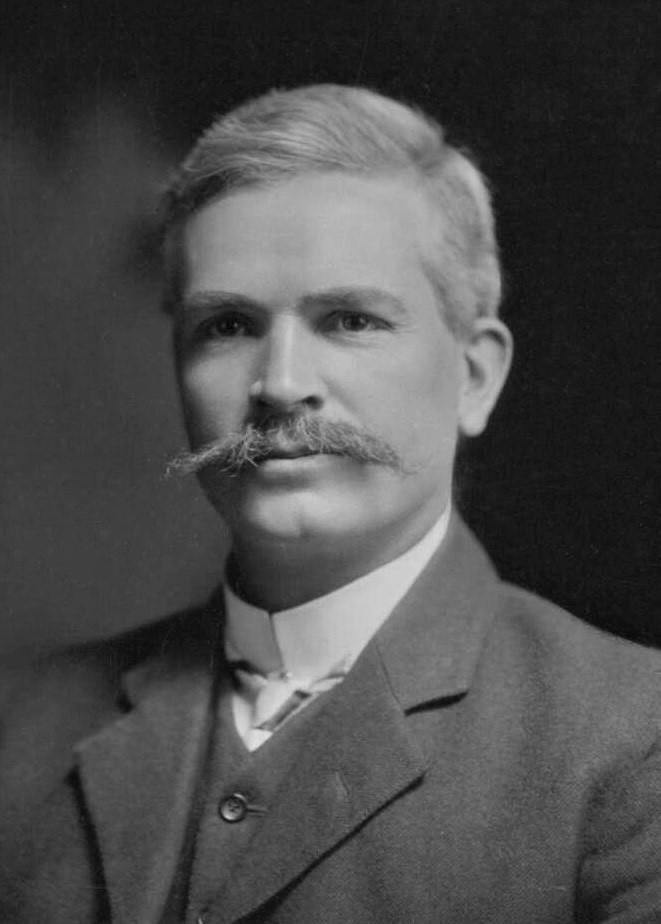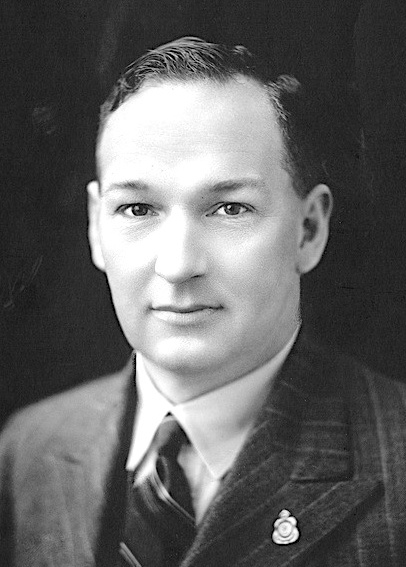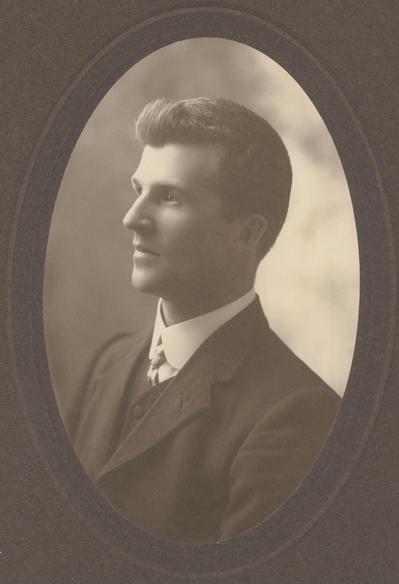|
Division Of Bourke
The Division of Bourke was an Australian electoral division in Victoria. The division was proclaimed in 1900, and was one of the original 65 divisions to be contested at the first federal election. It was abolished in 1949. It was named for Sir Richard Bourke, who was Governor of New South Wales at the time of the founding of Melbourne. It was based in the northern suburbs of Melbourne, including the suburbs of Brunswick and Coburg. After 1910, it was a safe seat for the Australian Labor Party The Australian Labor Party (ALP), also simply known as Labor, is the major centre-left political party in Australia, one of two major parties in Australian politics, along with the centre-right Liberal Party of Australia. The party forms t ..., but was lost to an independent Labor member in 1946. Members Election results {{DEFAULTSORT:Bourke, Division Of 1901 establishments in Australia Constituencies established in 1901 Bourke ... [...More Info...] [...Related Items...] OR: [Wikipedia] [Google] [Baidu] |
Richard Bourke
General Sir Richard Bourke, KCB (4 May 1777 – 12 August 1855), was an Irish-born British Army officer who served as Governor of New South Wales from 1831 to 1837. As a lifelong Whig (Liberal), he encouraged the emancipation of convicts and helped bring forward the ending of penal transportation to Australia. In this, he faced strong opposition from the landlord establishment and its press. He approved a new settlement on the Yarra River, and named it Melbourne, in honour of the incumbent British prime minister, Lord Melbourne. Early life and career Born in Dublin, Ireland, Bourke was educated at Westminster and read law at Christ Church, Oxford. He was a cousin of Edmund Burke and spent school and university holidays at Burke's home, and thus acquired some influential friends. He joined the British Army as an ensign in the Grenadier Guards on 22 November 1798, serving in the Netherlands with the Duke of York before a posting in South America in 1807, where he participated ... [...More Info...] [...Related Items...] OR: [Wikipedia] [Google] [Baidu] |
1910 Australian Federal Election
The 1910 Australian federal election was held in Australia on 13 April 1910. All 75 seats in the House of Representatives, and 18 of the 36 seats in the Senate were up for election. The incumbent Commonwealth Liberal Party (the result of a merger between the Protectionist Party and the Anti-Socialist Party) led by Prime Minister Alfred Deakin was defeated by the opposition Labour Party, led by Andrew Fisher. The election represented a number of landmarks: it was Australia's first elected federal majority government; Australia's first elected Senate majority; the world's first Labour party majority government at a national level; after the 1904 Chris Watson minority and Fisher's former minority government the world's third Labour party government at a national level; the first time it controlled ''both'' houses of a bicameral legislature; and the first time that a prime minister, in this case Deakin, was defeated at an election. It also remains the only election in Aust ... [...More Info...] [...Related Items...] OR: [Wikipedia] [Google] [Baidu] |
1946 Australian Federal Election
The 1946 Australian federal election was held in Australia on 28 September 1946. All 74 seats in the House of Representatives and 19 of the 36 seats in the Senate were up for election. The incumbent Labor Party led by Prime Minister Ben Chifley defeated the opposition Liberal–Country coalition, led by Robert Menzies. It was the Liberal Party's first federal election since its creation. This was the first time the Labor party had won a second consecutive election. This was also the last time the Labor party would win a federal election until the 1972 election. The election was held in conjunction with three referendum questions, one of which was carried. Results House of Representatives ---- ;Notes * Independent: Doris Blackburn ( Bourke, Vic.) * In South Australia, the Liberal Party was known as the Liberal and Country League. Senate ---- ;Notes * Of the three senators elected on Liberal–Country joint tickets, two were Liberal Party members and one was a Cou ... [...More Info...] [...Related Items...] OR: [Wikipedia] [Google] [Baidu] |
Bill Bryson (politician)
William George Bryson (24 February 1898 – 2 March 1973) was an Australian politician for the Australian Labor Party The Australian Labor Party (ALP), also simply known as Labor, is the major centre-left political party in Australia, one of two major parties in Australian politics, along with the centre-right Liberal Party of Australia. The party forms t ... from 1943 to 1946 and 1949 to 1955 and helped establish the Democratic Labor Party. Bryson won the House of Representatives seat of Bourke at the 1943 election, but was beaten by the independent Doris Blackburn at the 1946 election. Bourke was abolished prior to the 1949 election and partly replaced by Wills and Bryson defeated Blackburn at the election. In 1955, Bryson and six other Victorian federal members were expelled from the Labor Party as members of the Industrial Groups. In April 1955, they established the Australian Labor Party (Anti-Communist), which was renamed the Democratic Labor Party ... [...More Info...] [...Related Items...] OR: [Wikipedia] [Google] [Baidu] |
William George Bryson
William is a male given name of Germanic origin.Hanks, Hardcastle and Hodges, ''Oxford Dictionary of First Names'', Oxford University Press, 2nd edition, , p. 276. It became very popular in the English language after the Norman conquest of England in 1066,All Things William"Meaning & Origin of the Name"/ref> and remained so throughout the Middle Ages and into the modern era. It is sometimes abbreviated "Wm." Shortened familiar versions in English include Will, Wills, Willy, Willie, Bill, and Billy. A common Irish form is Liam. Scottish diminutives include Wull, Willie or Wullie (as in Oor Wullie or the play ''Douglas''). Female forms are Willa, Willemina, Wilma and Wilhelmina. Etymology William is related to the given name ''Wilhelm'' (cf. Proto-Germanic ᚹᛁᛚᛃᚨᚺᛖᛚᛗᚨᛉ, ''*Wiljahelmaz'' > German ''Wilhelm'' and Old Norse ᚢᛁᛚᛋᛅᚼᛅᛚᛘᛅᛋ, ''Vilhjálmr''). By regular sound changes, the native, inherited English form of the name shoul ... [...More Info...] [...Related Items...] OR: [Wikipedia] [Google] [Baidu] |
1943 Australian Federal Election
The 1943 Australian federal election was held in Australia on 21 August 1943. All 74 seats in the House of Representatives and 19 of the 36 seats in the Senate were up for election. The incumbent Labor Party, led by Prime Minister John Curtin, defeated the opposition Country–UAP coalition led by Arthur Fadden in a landslide. Fadden, the leader of the Country Party, was serving as Leader of the Opposition despite the Country Party holding fewer seats in parliament than the United Australia Party (UAP). He was previously the Prime Minister in August 1941, after he was chosen by the coalition parties to lead the government after the forced resignation of Prime Minister Robert Menzies, the UAP leader. However, he stayed in office for only six weeks before the two independents who held the balance of power joined Labor in voting down his budget. Governor-General Lord Gowrie was reluctant to call an election for a parliament barely a year old, especially considering the intern ... [...More Info...] [...Related Items...] OR: [Wikipedia] [Google] [Baidu] |
Independent Politician
An independent or non-partisan politician is a politician not affiliated with any political party or bureaucratic association. There are numerous reasons why someone may stand for office as an independent. Some politicians have political views that do not align with the platforms of any political party, and therefore choose not to affiliate with them. Some independent politicians may be associated with a party, perhaps as former members of it, or else have views that align with it, but choose not to stand in its name, or are unable to do so because the party in question has selected another candidate. Others may belong to or support a political party at the national level but believe they should not formally represent it (and thus be subject to its policies) at another level. In running for public office, independents sometimes choose to form a party or alliance with other independents, and may formally register their party or alliance. Even where the word "independent" is used, s ... [...More Info...] [...Related Items...] OR: [Wikipedia] [Google] [Baidu] |
Doris Blackburn
Doris Amelia Blackburn (; 18 September 1889 – 12 December 1970) was an Australian social reformer and politician. She served in the House of Representatives from 1946 to 1949, the second woman after Enid Lyons to do so. Blackburn was a prominent socialist and originally a member of the Labor Party. She was married to Maurice Blackburn, a Labor MP, but he was expelled from the party in 1937 and she resigned from the party in solidarity. Her husband died in 1944, and she was elected to his former seat at the 1946 federal election – the first woman elected to parliament as an independent. However, Blackburn served only a single term before being defeated. She later served as president of the Women's International League for Peace and Freedom. Early life Born in Hawthorn, Melbourne, Victoria to Lebbeus Hordern, estate agent, and his wife Louisa Dewson (née Smith), Doris Hordern became involved in women's rights and peace issues from a young age and served as the campaign secr ... [...More Info...] [...Related Items...] OR: [Wikipedia] [Google] [Baidu] |
Electoral District Of Clifton Hill
Electoral district of Clifton Hill was an electoral district of the Legislative Assembly in the Australian state of Victoria. It centred on the north-eastern Melbourne Melbourne ( ; Boonwurrung/ Woiwurrung: ''Narrm'' or ''Naarm'') is the capital and most populous city of the Australian state of Victoria, and the second-most populous city in both Australia and Oceania. Its name generally refers to a metro ... suburb of Clifton Hill. Members for Clifton Hill Election results References * Former electoral districts of Victoria (Australia) 1927 establishments in Australia 1955 disestablishments in Australia {{VictoriaAU-gov-stub ... [...More Info...] [...Related Items...] OR: [Wikipedia] [Google] [Baidu] |
Maurice Blackburn
Maurice McCrae Blackburn (19 November 1880 – 31 March 1944) was an Australian politician and socialist lawyer, noted for his protection of the interests of workers and the establishment of the legal firm known as Maurice Blackburn Lawyers. Biography Blackburn was born in Inglewood, Victoria, to Maurice Blackburn, a bank manager, and his wife Thomasann Cole (née McCrae), daughter of Captain Alexander McCrae. Following the death of his father in 1887, Blackburn and his mother moved to Melbourne where he was educated at Melbourne Grammar School, matriculating in 1896. He attended the University of Melbourne, graduating in arts and law in 1909, and began to practise as a lawyer a year later. In the same year, he also became a member of the Victorian Socialist Party and was soon editing its newspaper, ''The Socialist''. Later, in about 1908, he joined the Australian Labor Party. Blackburn married Doris Amelia Hordern on 10 December 1914. Two weeks earlier he had entered the ... [...More Info...] [...Related Items...] OR: [Wikipedia] [Google] [Baidu] |
James Scullin
James Henry Scullin (18 September 1876 – 28 January 1953) was an Australian Labor Party politician and the ninth Prime Minister of Australia. Scullin led Labor to government at the 1929 Australian federal election. He was the first Catholic, as well as Irish-Australian, to serve as Prime Minister of Australia. The Wall Street Crash of 1929 transpired just two days after his swearing in, which would herald the beginning of the Great Depression in Australia. Scullin's administration would soon be overwhelmed by the economic crisis, with interpersonal and policy disagreements causing a three-way split of his party that would bring down the government in late 1931. Despite his chaotic term of office, Scullin remained a leading figure in the Labor movement throughout his lifetime, and served as an ''éminence grise'' in various capacities for the party until his retirement in 1949. The son of working-class Irish-immigrants, Scullin spent much of his early life as a laborer and ... [...More Info...] [...Related Items...] OR: [Wikipedia] [Google] [Baidu] |
Electoral District Of Brunswick
The electoral district of Brunswick is an electorate of the Victorian Legislative Assembly. It covers an area of in inner northern Melbourne, and includes the suburbs of Brunswick, Brunswick East, Carlton North, Fitzroy North, Princes Hill and parts of Brunswick West. It lies within the Northern Metropolitan Region of the upper house, the Legislative Council. Historically a very safe seat for the Labor Party, Brunswick has in recent elections seen an increase in support for the Greens, who won the seat at the 2018 election. The seat has had three periods of existence. The seat was first formed in 1904 and abolished in 1955, recreated in 1976 and abolished again in 1992, and again re-established in 2002. It has always been held for Labor, apart from two months in 1955 when incumbent MP Peter Randles defected to the Australian Labor Party (Anti-Communist) in the Australian Labor Party split of 1955. Brunswick was first won in 1904 by Labor candidate Frank Anstey. Anst ... [...More Info...] [...Related Items...] OR: [Wikipedia] [Google] [Baidu] |





